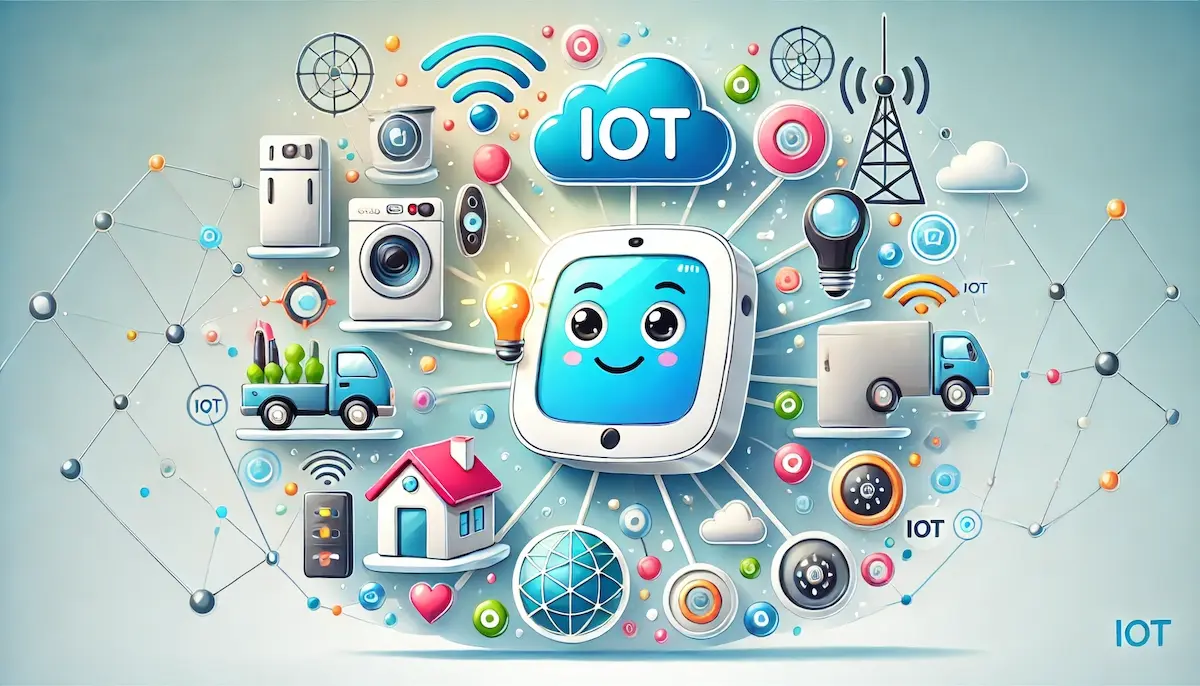The Internet of Things (IoT) refers to the network of physical objects—”things”—embedded with sensors, software, and other technologies to connect and exchange data with other devices and systems over the internet. These “things” range from ordinary household items to sophisticated industrial tools. IoT has revolutionized the way we interact with the world around us, making it smarter and more responsive.
How IoT Works
IoT devices collect data from their environment using sensors. This data is then transmitted to a central system, often a cloud-based platform, where it is processed and analyzed. Based on this analysis, actions can be taken automatically, or insights can be provided to users to make informed decisions.
Key Components of IoT
- Sensors and Devices: These collect data from the environment. Examples include temperature sensors, GPS modules, and cameras.
- Connectivity: IoT devices connect to the internet or other networks through various communication protocols like Wi-Fi, Bluetooth, and cellular networks.
- Data Processing: Once the data is collected, it needs to be processed. This can happen locally on the device or remotely on a server.
- User Interface: The processed data is then presented to the user through interfaces such as mobile apps or web dashboards, allowing for interaction and control.
Applications of IoT
Smart Homes
In smart homes, IoT devices can automate and control household systems like lighting, heating, and security. For instance, smart thermostats learn your schedule and adjust the temperature to save energy. Smart locks allow you to lock and unlock doors remotely, enhancing home security.
Healthcare
IoT is transforming healthcare by enabling remote monitoring and telemedicine. Wearable devices like smartwatches can track vital signs such as heart rate and sleep patterns. These devices can alert users and healthcare providers to potential health issues, facilitating early intervention.
Industrial IoT (IIoT)
In industries, IoT improves efficiency and safety. Connected sensors monitor machinery and equipment, predicting maintenance needs before failures occur. This predictive maintenance reduces downtime and lowers repair costs. Additionally, IoT systems can optimize production processes by analyzing real-time data.
Agriculture
IoT in agriculture, often referred to as smart farming, uses sensors to monitor soil moisture, weather conditions, and crop health. This data helps farmers optimize irrigation, reduce waste, and increase crop yields. Drones equipped with IoT technology can survey large fields, providing valuable insights quickly.
Challenges of IoT
Security
With the proliferation of connected devices, security is a significant concern. IoT devices can be vulnerable to hacking and cyberattacks, potentially compromising sensitive data. Ensuring robust security measures, such as encryption and secure authentication, is critical.
Interoperability
IoT devices from different manufacturers often use various standards and protocols, making it challenging for them to communicate seamlessly. Developing universal standards can help improve interoperability and ease of use.
Data Privacy
IoT devices collect vast amounts of personal data, raising privacy concerns. Ensuring that data is collected, stored, and processed in compliance with privacy regulations is essential to protect user privacy.
The Future of IoT
The future of IoT holds immense potential. With advancements in artificial intelligence (AI) and machine learning, IoT systems will become more intelligent and capable of making autonomous decisions. The rollout of 5G networks will enhance connectivity, allowing for faster and more reliable communication between devices. As IoT continues to evolve, it will further integrate into our daily lives, driving innovation and improving efficiency across various sectors.
Blockfine thanks you for reading and hopes you found this article helpful.
